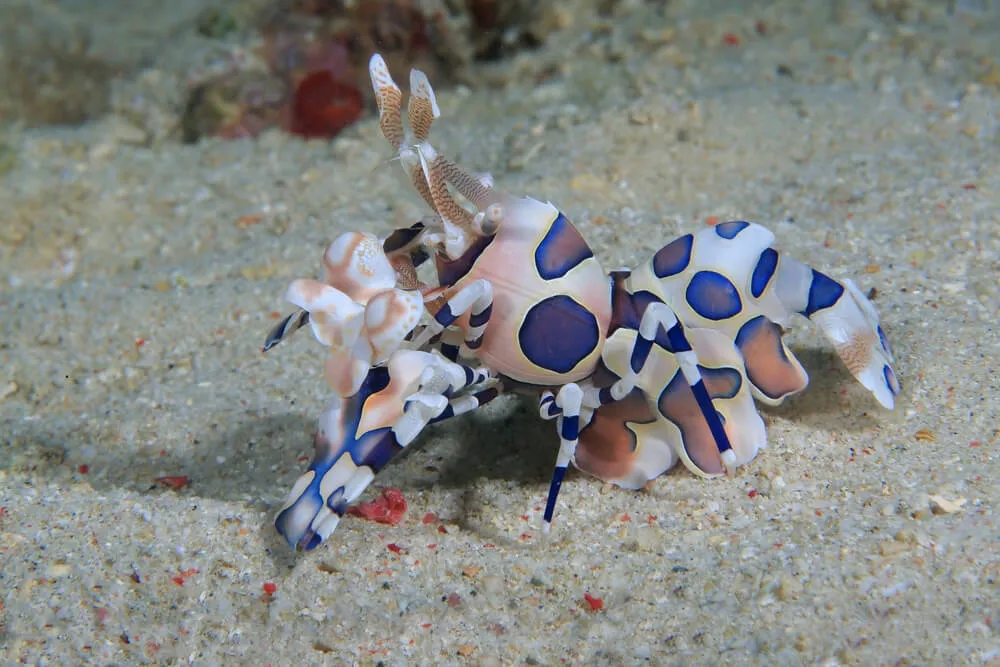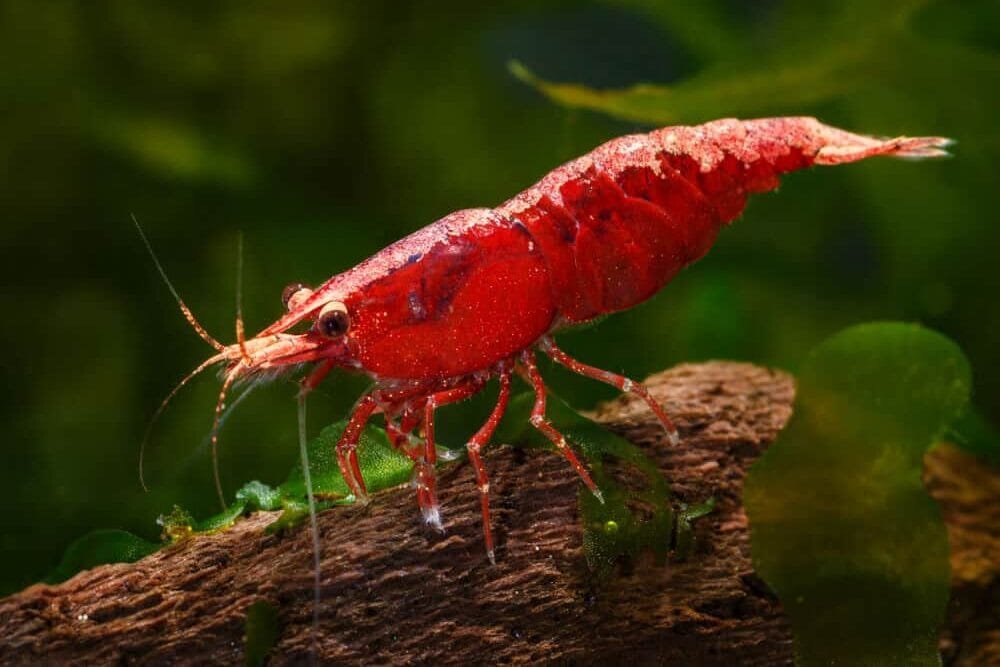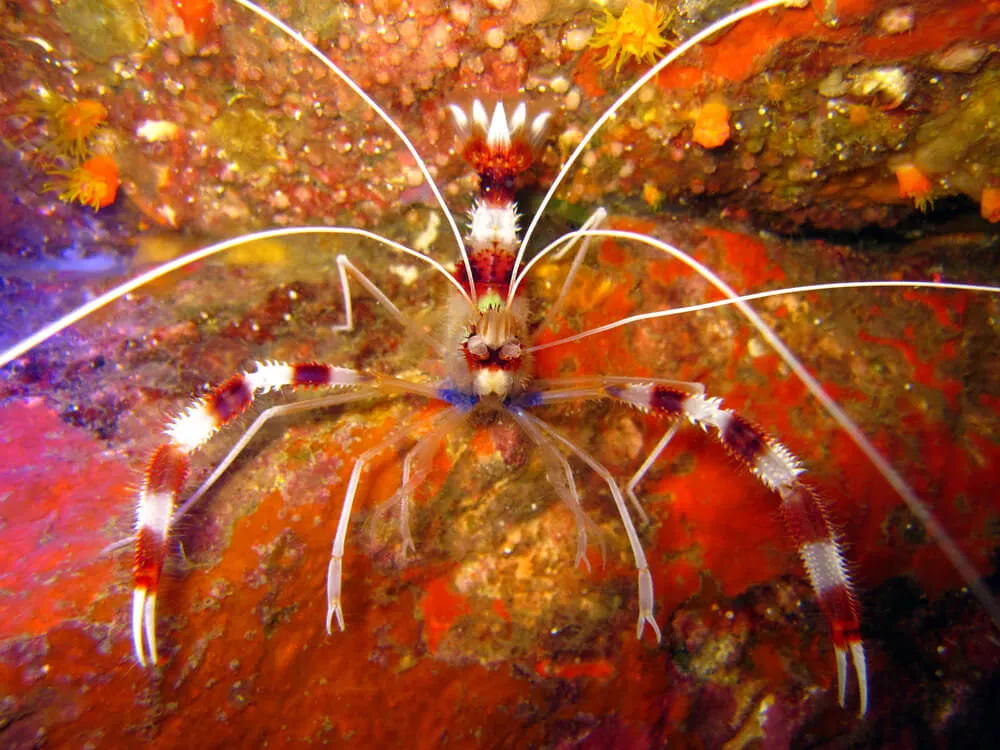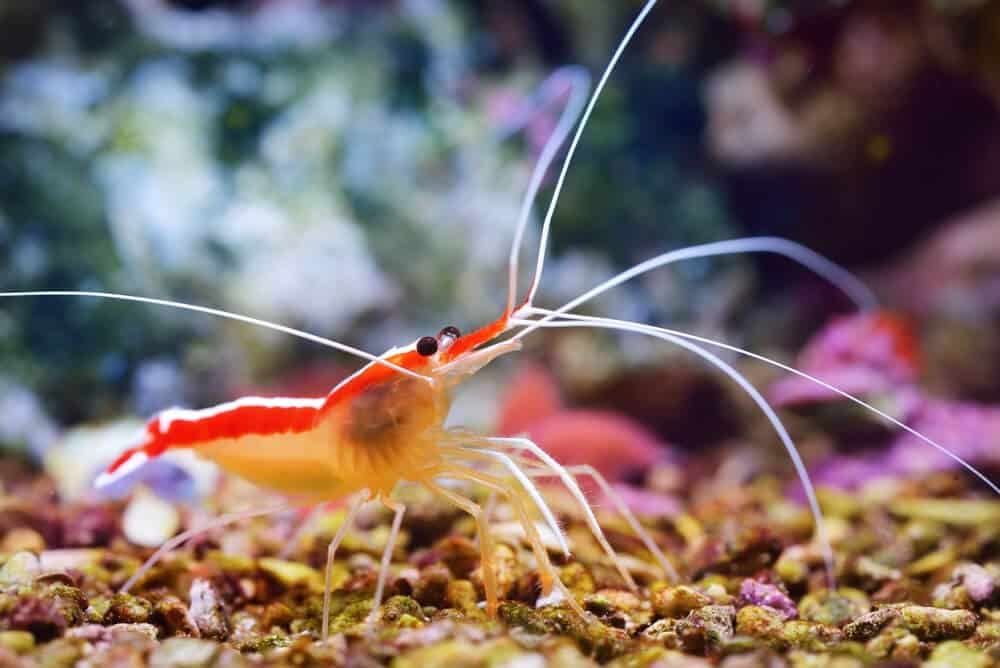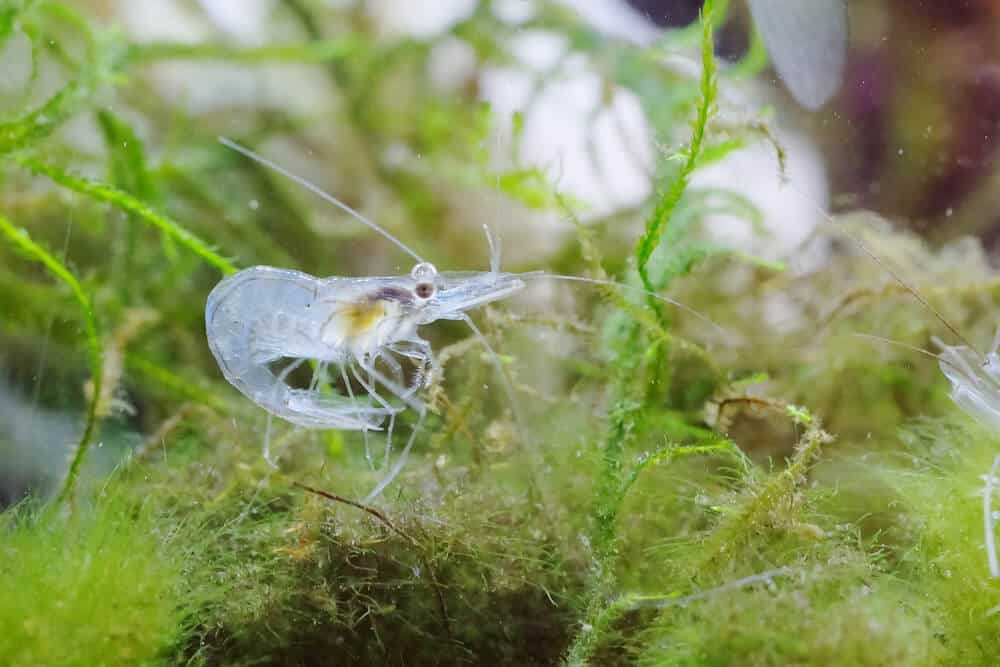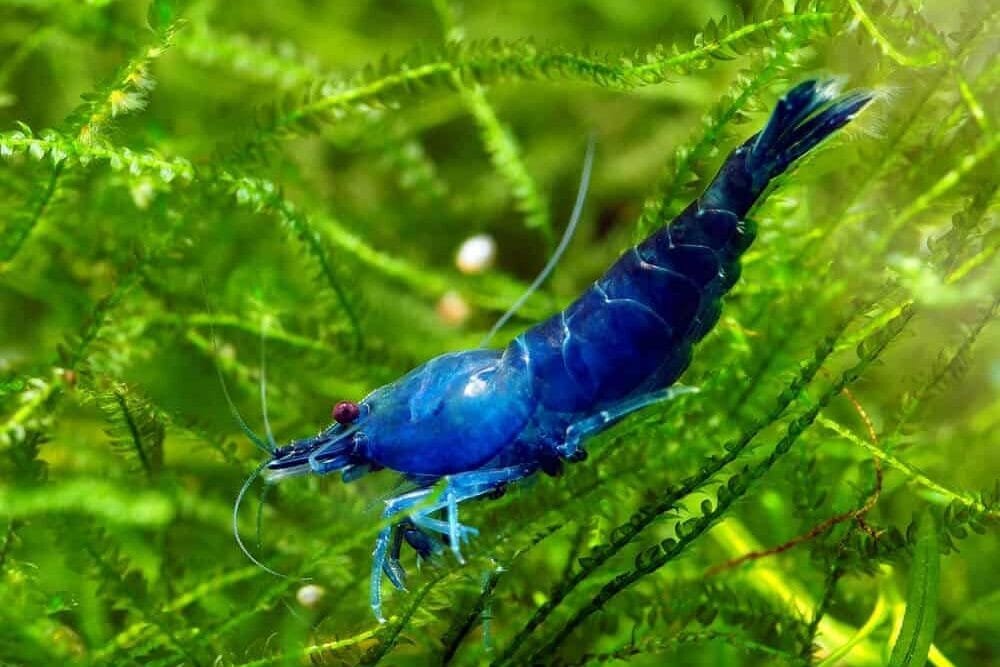Tips For Raising Happy And Healthy Bamboo Shrimp
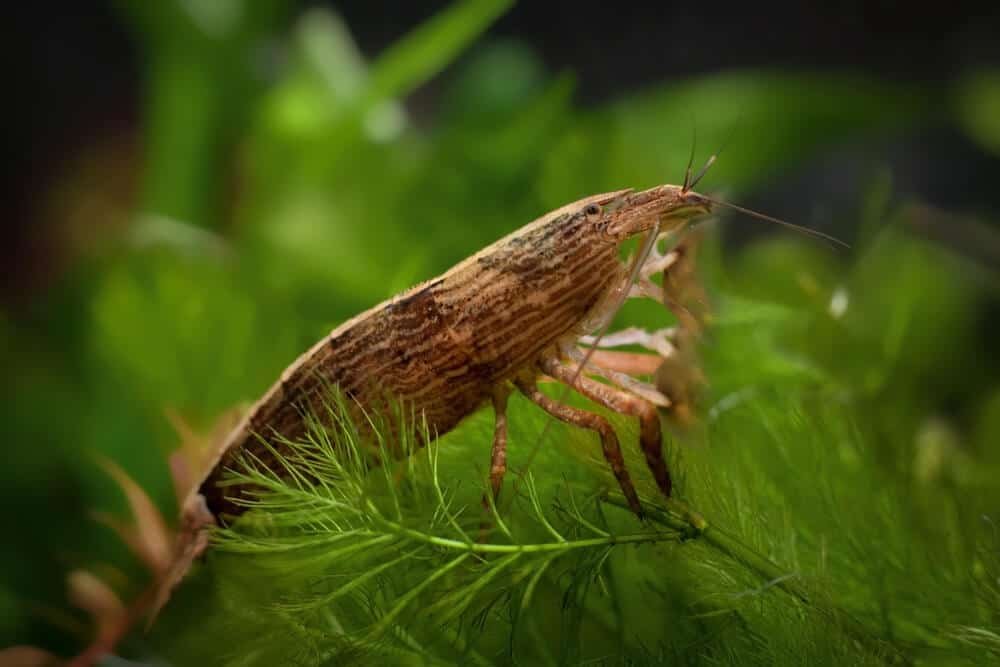
Species Overview
Common Names: Bamboo Shrimp, Filter Shrimp, Wood Shrimp, Fan Shrimp, Asian Filter Shrimp, Timber Shrimp
Scientific Name: Atyopsis moluccensis
Adult Size: 3 inches
Life Expectancy: 3-6 years
Characteristics
Family: Atyidae
Origin: East Asia
Social: Peaceful
Minimum Tank Size: 10 gallons
Diet: Omnivore
Breeding: Difficult
Care: Moderate
pH: 6.5 to 7.5
Hardness: 5-10 dGH
Temperature: 75-82 degrees F
The Bamboo shrimp is a type of shrimp that is native to East Asia. These shrimps are popular in the aquarium trade and can be found in many pet stores. They are not difficult to care for, but they do require a bit of effort to keep them healthy.
They are omnivorous and will eat various foods but prefer live food such as brine shrimp or bloodworms. They also consume algae, small insects, and detritus.
These shrimps are also known as fan shrimp or wood shrimp, from the large paddle-like legs that they use to filter food from the water.
They are also named after their bamboo-like appearance and are often found in ponds and streams. These shrimps are not known for being good swimmers, so when you see them in an aquarium, they’d prefer to stay near the bottom, where they can find food more efficiently.
These creatures are scavengers by nature and will spend most of their time picking through the substrate in search of food. They feed on algae, detritus, and small invertebrates in the wild.
In captivity, they can be fed various foods, including algae tablets, freeze-dried foods, and live or frozen foods. It is best to offer them a variety of foods to ensure that they get all the nutrients they need.
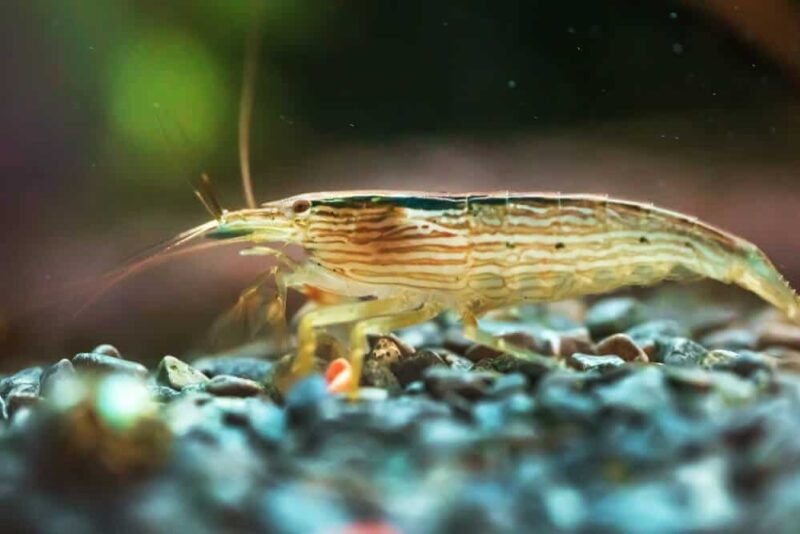
Origin and Classification
Bamboo shrimp originates from Asia. These shrimps are classified as Caridina Denticulata and are a part of the Atyidae family.
They are also known as Wood Shrimp, Ghost Shrimp, or Filter Shrimp. These little critters can grow up to 2 inches (5 cm) in length and have a lifespan of 2-3 years.
Habitat
These freshwater crustaceans are native to Thailand. Known for their peaceful temperament, they do well in community tanks.
These shrimps prefer slow-moving water and plenty of hiding places. They are not demanding in terms of water parameters and will do well in a range of temperatures (68-82 degrees Fahrenheit).
A 10-gallon tank is sufficient for a few of these shrimps. These shrimps are not known to be easily bred in captivity, so they must be obtained from a pet store or online retailer. Since these are social creatures, they do best in groups of 6 or more individuals.
Water Parameters
This type of shrimp is one of the most popular species of freshwater shrimp. They are very sensitive to water conditions and prefer a well-oxygenated, clean aquarium.
They should be kept in an aquarium with a pH between 6.5 and 7.5, a water hardness of 5-10 dGH, and a temperature of 75-82 degrees Fahrenheit.
They do best in an established aquarium with plenty of hiding places and live plants, as they are omnivorous and will eat a variety of foods including algae, brine shrimp, bloodworms, and other small invertebrates. They should be fed several times a day in small amounts.
Appearance and Size
Bamboo shrimps are also known for their unique appearance and size. They are relatively large compared to other species of aquarium shrimp, with their ability to grow up to 2 inches in length.
They are also very active and known for their playful nature. These shrimps are most commonly found in shades of brown and red, but they can also be found in other colors, such as yellow and white.
Care
One good thing about this type of shrimp is that caring for them is not difficult. Most of the time, they can look after themselves so there aren’t any special requirements to care for them.
However, just like with any aquatic pet, their preferred conditions need to be kept and maintained.
It’s important to clean the tank regularly. This includes changing the water and wiping algae away. There may be times when you’ll notice an old shell from molting.
You wait a couple of days before removing it since shrimp often comes back to eat them and absorb their nutrients. But if they don’t show any interest, you’re free to remove it.
This is also true for dead shrimp. There are times when the other shrimp will feed on their dead tank mate for nutrients. However, if they leave it alone, then you can remove the corpse from the tank.
If a shrimp remains motionless for a long period of time, it could be an indication of two things: either they are preparing themselves to molt or there is an issue in the tank that’s affecting them.
Usually, if a shrimp doesn’t move or eat for a couple of days, then it’s a clear indication of the latter.
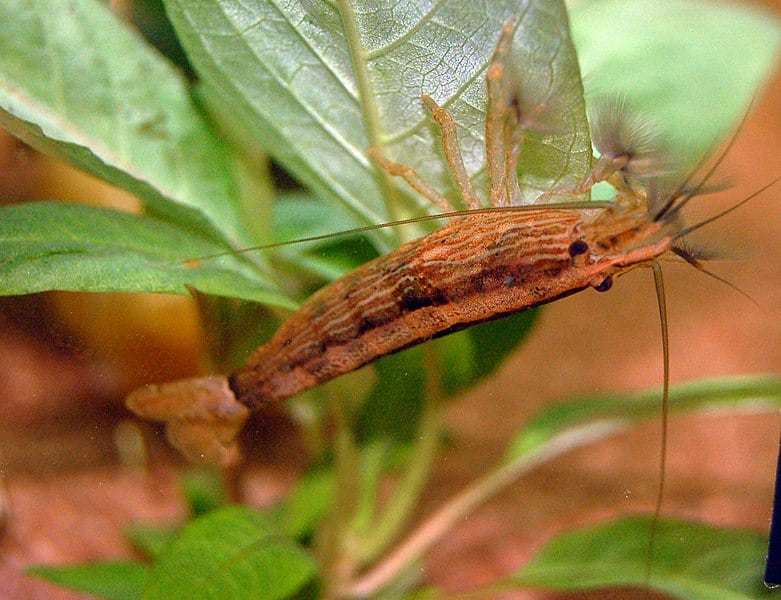
Substrate
The most important thing to remember when caring for this type of shrimp is to provide them with a suitable substrate. They need a substrate that they can sift through in order to find food, and a good option for this is sand or gravel.
The substrate should also be fine enough that the shrimp can easily move through it without getting stuck.
Another important consideration when choosing a substrate for this shrimp is that it should not contain any harmful chemicals or pollutants.
This is because this type of shrimp is very sensitive to water quality and can easily become sick if exposed to toxic substances.
If you provide your shrimps with a suitable substrate and keep the water clean, they will thrive and be a fun addition to your aquarium.
Behavior and Temperament
This type of shrimp is a beautiful little creature that is very popular among aquarium enthusiasts. They are peaceful and make great tank mates for other small fish and invertebrates.
Bamboo shrimps are not true shrimp but are more closely related to crabs and lobsters. These interesting creatures are native to Southeast Asia and can be found in slow-moving rivers and streams.
They are filter feeders and use their specialized appendages to capture microscopic food particles from the water column.
They are not known to bother other tank mates and do not compete well for food, so it is important to provide them with a quality diet of small pellets or flakes designed for bottom-dwelling fish.
In the wild, this shrimp often live in groups, so they should be kept in pairs or small groups in the aquarium.
They are relatively easy to care for as long as their basic needs are met. They require a well-oxygenated aquarium with plenty of hiding places among rocks.
Breeding
This type of shrimp is relatively difficult to breed in captivity and nearly impossible to care for. As the larvae need brackish water to survive, this is something that most people are not able to provide.
However, this is not to say that they cannot be bred in captivity. With the right conditions and care, this shrimp can be successfully bred in captivity.
The first step in breeding this type of shrimp is to ensure that you have a male and a female. The best way to tell the difference between a male and a female is by their legs.
Females have shorter legs than males. Once you have determined that you have a male and a female, you will need to set up a breeding tank.
The breeding tank should be at least 10 gallons and should have a sponge filter. The water should be shallow, no more than 6 inches deep, and should be well-oxygenated. You will also need to add some live plants to the tank for the shrimp to hide in.
The breeding process generally starts after the male shrimp molts and begins looking for a place to mate with the female. The female will then carry the larvae for several months before they are born.
Lifespan
Aside from being known for their bamboo-like appearance, they are also known for their long lifespan. This shrimp can live for up to two to three years if their preferred living conditions are met.
Tank Requirements and Level
These freshwater species of shrimp that originates from Asia are very peaceful and make a great addition to any community tank. They are also very easy to care for and do not require any special tank requirements.
These shrimps can live in both brackish and freshwater tanks, but they prefer freshwater tanks with a pH between 6.5 and 7.5. They also prefer tanks with plenty of hiding places and plenty of algae for them to eat.
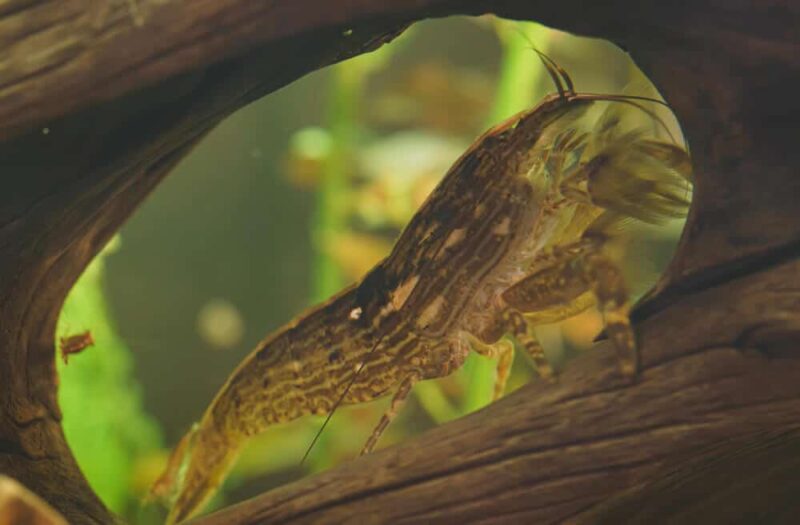
Parasites and Diseases
As you now know, these shrimps are a type of freshwater shrimp that is commonly kept as a pet.
But unlike any other common aqua pets, these shrimps are very sensitive to changes in water quality and temperature, and as a result, they are susceptible to a variety of diseases and parasites.
It is important to be aware of the potential health problems that your shrimp may face so that you can take steps to prevent them.
Some common diseases and parasites that affect this shrimp include white spot disease, bacterial infections, and fungal infections.
White Spot Disease
White spot disease is a highly contagious viral infection that affects both freshwater and saltwater fish. This disease is characterized by white spots on the body of the fish, which can eventually lead to death.
If your shrimp has white spots on its body, you should take it to a vet or aquarist for treatment. Overall, this shrimp makes a great addition to any aquarium as long as you are willing to care for them properly.
Bacterial Infections
Bacterial infections are another common health problem in this type of shrimp, and they can cause a variety of symptoms including lethargy, loss of appetite, and redness or inflammation of the skin.
Fungal Infections
Fungal infections are also relatively common in these shrimps, and they can cause similar symptoms as bacterial infections.
Predators
This type of shrimp are often preyed upon by larger fish, such as bettas and goldfish. In the wild, their predators also include snakes, turtles, and birds.
While they are not typically aggressive, these shrimps will sometimes fight with each other for food or territory.
Tankmates and Compatibility
Bamboo shrimps are a popular and unique addition to many aquariums because they are known for their striking appearance and their ability to filter large amounts of water.
They are peaceful and make good tank mates for other peaceful fish. They do best in groups of two or more and should be kept in an aquarium with plenty of hiding places.
These shrimps are not compatible with fishes that are known to eat invertebrates.
Benefits
These creatures which got their name from their diet of bamboo leaves are easy to care for and make a great addition to any aquarium as discussed. They are peaceful creatures that will not bother other fish or shrimp in the tank.
These shrimps are also known as filter shrimps because they help keep the water clean by eating algae and other debris. This type of shrimp is also a great source of protein and is low in calories.
You can also eat them raw, and cooked, or use them as an ingredient in other dishes. If you love seafood, then you’ll definitely enjoy this type of shrimp.
These little critters are not only delicious, but they’re also healthy for you. These are popular food items in many Asian countries and are often used in stir-fries and soup dishes.
These shrimps are low in calories and fat and high in protein and omega-3 fatty acids. This makes them a great choice for those who are looking for a healthy seafood option.
If you’re interested in acquiring this type of shrimp, you can usually find them at Asian markets or online retailers.
When purchasing them, be sure to look for ones that have been farm-raised, as these will be the freshest and most sustainable options.
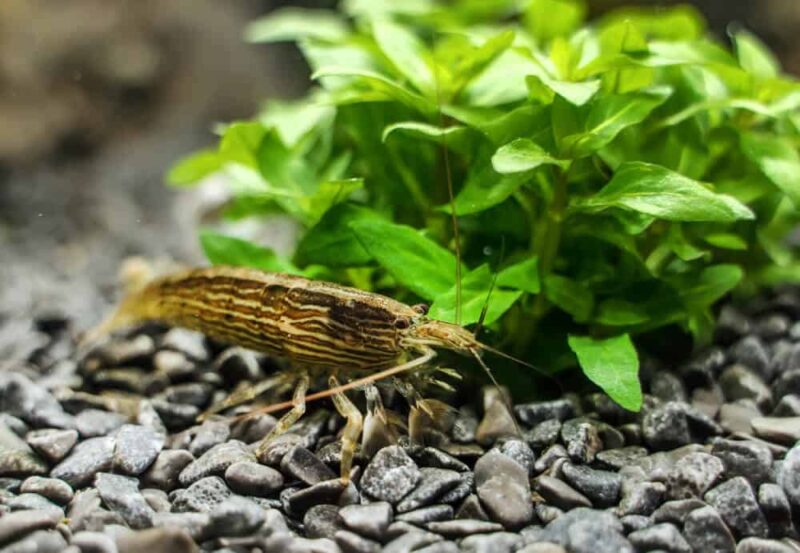
FAQs
What do these shrimps eat?
These shrimps are filter feeders that primarily eat phytoplankton, microscopic plants that float in the water. They use their finely-combed appendages to sweep food particles into their mouths.
In addition to phytoplankton, they may also consume small crustaceans, insects and other organic matter. These shrimps are native to Southeast Asia and typically inhabit slow-moving rivers, streams and ponds.
In the wild, they are often found clinging to rocks or vegetation near the water’s surface. They are also popular in home aquariums where they can be fed a variety of live, frozen and freeze-dried foods.
How do these shrimps reproduce?
This type of shrimp is part of the Atyidae family, which contains over 300 species of freshwater shrimps. These animals are found in tropical and subtropical climates around the world.
These filter feeders reproduce by laying eggs that hatch into larvae. The larvae develop into adults over the course of several molts. These shrimps typically live for one to two years in captivity.
How big does this type of shrimp get?
The average shrimp of this type grows to be about 2 inches long. However, some shrimp may grow to be 3 inches long.
Are these shrimps good to eat?
Yes, this type of shrimp is good to eat. They are a healthy source of protein and omega-3 fatty acids.
Do they need a filter?
The answer is that they do not necessarily need a filter, but it can help to keep the water clean and provide some extra aeration. If you do choose to use a filter, make sure that it is not too strong or it could harm the shrimp.
How often do I need to feed them?
This type of shrimp should be fed 1-2 times per day. It needs very little food. A single pellet or piece of algae is enough to sustain it.
How do you care for this type of shrimp?
As far as care goes, these shrimps are relatively easy to keep. They do best in well-oxygenated water with a moderate flow rate. A tight-fitting lid is also recommended, as these shrimps are known to be good jumpers.
In terms of diet, these shrimp will feed on just about anything that they can fit into their mouths. This includes algae, detritus, and small bits of meaty foods.
How long does this type of shrimp live?
This shrimp can live for up to three years, although the average lifespan is closer to one or two years. These shrimps are relatively easy to care for, but they do require a bit of attention to detail.
For instance, these shrimps need a tank with plenty of hiding places and a moderate water flow. They also need to be fed a diet that includes both plant and animal matter.
Are these shrimps good pets?
These shrimps are good pets for people who are looking for unusual and interesting pets. They are easy to care for and do not require a lot of space.
These shrimps are also known to be very peaceful, making them a good choice for people who do not want a pet that is aggressive or high maintenance.
Where can you buy this type of shrimp?
You can purchase this shrimp from many different places. Some people buy them from their local pet store, while others order them online. There are also some specialty stores that sell them.
How much does this type of shrimp cost?
A bamboo shrimp typically costs between $5 and $10.
What types of aquariums should I buy for these shrimps?
There are a few things to consider when purchasing an aquarium for your shrimp.
First, you’ll need to decide what size tank you want. This shrimp can grow up to two inches in length, so you’ll need a tank that’s at least 10 gallons.
Second, you’ll need to choose a filter that’s appropriate for the size of your tank.
A good rule of thumb is to get a filter that can handle twice the amount of water in your tank.
Finally, you’ll need to decide on a substrate. This type of shrimp prefers sandy or gravel substrates, so choose one that’s comfortable for them to burrow in.
What fishes can go along well with this type of shrimp?
These shrimps are peaceful and make good tank mates with other small, peaceful fishes. They can be kept with other shrimp species as well as with snails and small, non-aggressive fishes.
Conclusion
These shrimps are an important part of the global shrimp industry and are widely farmed in Asia. They are also a popular food fish, with a mild taste and firm texture. Bamboo shrimps are an important food source for many people in Asia, as well as a valuable export commodity.
It’s advisable to get these shrimps as pets because they are low maintenance, making them a great choice for beginner aquarium hobbyists.
If you’ve been in this aqua interest for a while now, these shrimps will help keep your aquarium clean as these are scavengers and will eat algae and detritus, making them an integral part of the freshwater aquarium ecosystem.
Photo by: Marrabbio2 on Wiki
